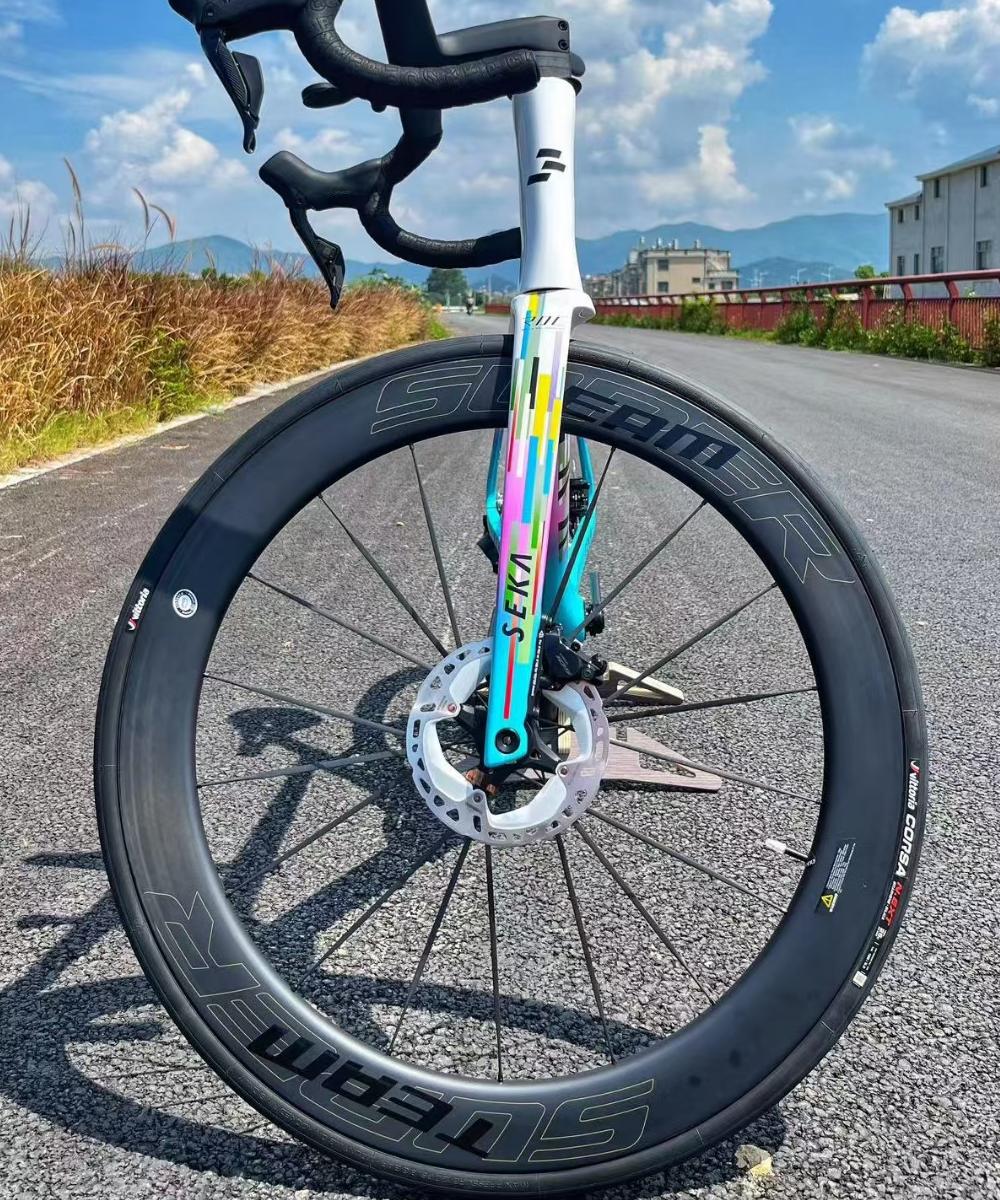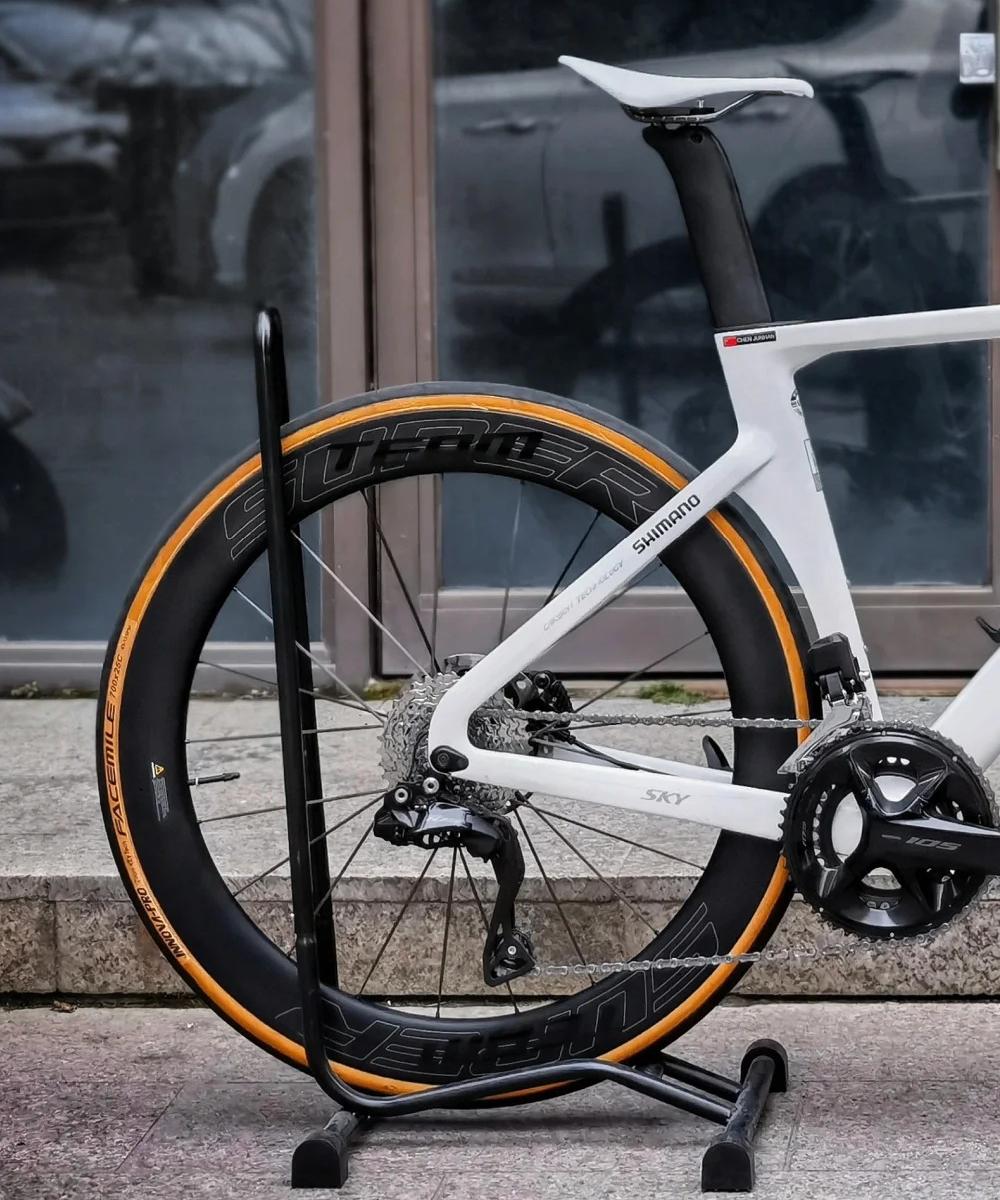Rim width is a crucial but often overlooked factor when choosing a road wheelset. In recent years, wide-rim wheels have gradually become mainstream, but narrow-rim wheels still have certain advantages in lightweight and aerodynamics. So, what is the difference between wide and narrow rims? Which riding styles are they suitable for? This article will analyze in depth how rim width affects riding performance.

1. Definition and development trend of rim width
Rim width generally refers to the inner rim width (i.e. the inner width of the tire mounting part), measured in millimeters (mm). The inner width of traditional road wheel rims is usually 15mm-17mm, while in recent years, the design of wide rim wheels has expanded to 19mm-25mm or even wider.
In the past, road wheels were mainly narrow rims because they could reduce weight and improve acceleration performance. However, with the advancement of aerodynamic research, the advantages of wide-rim wheels have gradually emerged and become the first choice of many professional teams and brands.
2. Wide rims vs. narrow rims: Impact on riding performance

(1) Aerodynamic performance
The shape of a wide-rim wheel is usually matched with a wider tire, which makes it more integrated with the airflow, reduces turbulence, and improves aerodynamic efficiency.
When riding at high speed, a narrow rim wheel may increase air resistance due to the "light bulb effect" of the tire (the tire width is much larger than the rim width).
Summary:
Wide rims are more suitable for flat roads and high-speed cruising
Narrow rims still have advantages in short-distance sprints
(2) Rolling resistance
When a wide-rim wheel is paired with a wide tire (25c-28c), the tire pressure can be reduced and the tire contact area can be increased, but the contact shape is shorter and wider, which reduces rolling resistance.
When a narrow rim wheel is paired with a narrow tire (less than 25C), a higher tire pressure is required to maintain deformation, and the contact shape is longer and narrower, resulting in relatively high rolling resistance.
Summary:
Wide rim + wide tire combination is more energy-efficient for long-distance riding
Narrow rim + narrow tire combination is more suitable for short-distance high-speed sprints
(3) Comfort and control

Wide-rim wheels can support wider tires and allow lower tire pressure, thereby providing better shock absorption and reducing fatigue during long-distance riding. Narrow-rim wheels have a higher tire pressure and a more direct road feel but may increase discomfort on bumpy roads or during long-term riding.
Summary: Wide-rim wheels are more suitable for long-distance and endurance riding. Narrow-rim wheels may be more suitable for racing and climbing riding.
(4) Weight and acceleration performance
Narrow-rim wheels are usually lighter than wide-rim wheels, especially in aluminum alloy wheels, where lightweight can lead to faster acceleration response.
Although wide-rim wheels are slightly heavier, they have greater inertia after the cruising speed stabilizes, which helps maintain speed.
Summary:
Narrow rims are more advantageous when climbing and sprinting
Wide rims are more efficient when cruising and endurance riding
3. Analysis of applicable scenarios: How to choose the right rim width?

Narrow rims (15mm-17mm): climbing, short-distance racing, and lightweight requirements. Choose 23c-25c tires, which are lightweight and flexible in acceleration.
Medium width (19mm-21mm): comprehensive riding, competitive racing, and long-distance riding. Choose 25c-28c tires, which take into account both speed and comfort.
Wide rims (22mm-25mm): endurance riding, wind-breaking cruising, and stubborn roads. Choose 28c-30c stable tires, that have low rolling resistance, and are comfortable.
If you are a competitive rider, you can still consider the combination of narrow rims + narrow tires; if you pursue comfort and stability, wide rims + wide tires may be a better choice. This is also the development trend of road wheels.
4. Future trend: Will wide rims completely replace narrow rims?
At present, wide-rim wheels have become the mainstream trend, especially in professional competitions and high-end product lines, more and more brands choose 19mm+ or even wider rim designs.
However, narrow rims still have irreplaceable advantages in certain specific scenarios, such as extremely lightweight climbing stages or sprint stages that require extremely high acceleration performance.
Overall, the choice of rim width still needs to be weighed according to personal riding style, riding environment, and comfort requirements.
Tags: #wide rim wheel #narrow rim wheel #rolling resistance #wide tire #Aerodynamics








Leave a comment
All comments are moderated before being published.
This site is protected by hCaptcha and the hCaptcha Privacy Policy and Terms of Service apply.